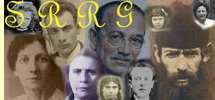



Nagórzanka is included in the Suchostaw Region Research Group (SRRG). Shtetlach were interwoven together like a tapestry and the Jewish people of neighboring shtetlach linked by marriages, trade and marketing. They shared schools, cemeteries, kosher butchers, bakers and more. Smaller shtetlach registered their birth, marriages and death in a nearby larger shtetl. One should research the neighboring area as well as an individual shtetl. The SRRG web site has resources and information that is relevant to many shtetlach. To search for family links and learn more about neighboring shtetlach, please visit the Suchostaw Region Research Group (SRRG).
Variant shtetl names: Nahorjanka, Naguzhanka, Neguzhanka, Nagoryanka
SRRG Coordinator: Susana Leistner Bloch
Administrative District: Czortków
Judicial / Tax District (Subdistrict): Jagielnica, or Czortków - depending on the time period
| Location: |
|
| History and Geography: |
|
| Resources: |
|
Galicia Resources:
- Logan J. Kleinwaks Galicia Genealogy Indexer
Gesher Galicia Resources:
| Holocaust: |
|
| Photos, Postcards and Videos: |
|
| Books: |
|
Faces:
- Group School Photos, submitted by Avi Schneebaum
- Organizations, submitted by Avi Schneebaum
- Youth Movements, submitted by Avi Schneebaum
Links and Databases:
|
|
|
This page is hosted at no cost to the public by JewishGen, Inc., a non-profit corporation. If you feel there is a benefit to you in accessing this site, your JewishGen-erosity is appreciated.
© Copyright 2017 Suchostaw Region Research Group. All rights reserved.
Compiled by Susana Leistner Bloch.
Webmasters: Edward Rosenbaum and Binny Lewis.
Back to SRRG Home Page | Jewish Gen Home Page | KehilaLinks Directory | Gesher Galicia | JewishGen Online Worldwide Burial Registry (JOWBR) | Jewish Records Indexing - Poland
Last updated 09/10/2017 by ELR
Copyright © 2017 SRRG